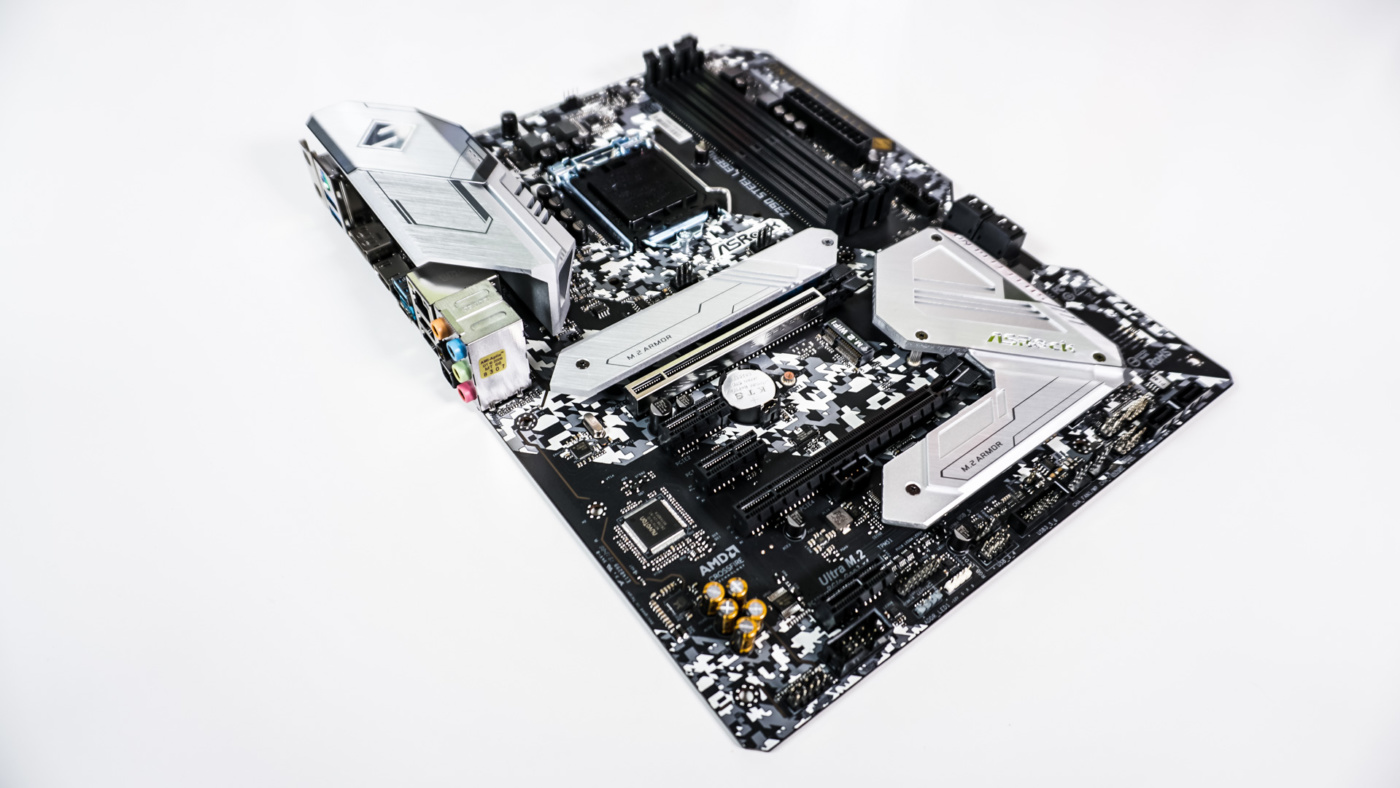Final Thoughts
I really like when ASRock introduced the “Steel Legend” series with the B450 Steel Legend and now we have the Z390 Steel Legend. The Steel Legend series is made to give users a great motherboard with a boatload of features, a great design, all while keeping the price as low as possible. Right now the board is selling at our favorite online retailer for $145.99, which is quite low for a Z390 board.
In terms of features this board has what you would expect in a Z390 board. You have dual PCI-Express 3.0 x4 M.2 slots, both of which have integrated heatsinks. You also have USB 3.1 gen 2 support with two ports on the rear I/O (1x Type-A, 1x Type-C). The main PCI-Express 3.0 x16 slot is metal reinforced and you can install memory all the way up to 4266 MHz. You are also getting ASRock’s “Full Spike” ESD protection for the USB, Ethernet, and audio ports.
ASRock has really focused on design with the Steel Legend series. The black PCB with the white digital camo going across it looks pretty awesome. The silver heatsinks accent the board perfectly and I really like that ASRock made the bottom M.2 and PCH heatsink one large piece. It just makes the board go together quite nicely. You can’t forget about the RGB lighting which goes across the edge of the board and is present on the PCH heatsink.
The only real downside to this motherboard is the fact that the board was VR Thermal Throttling when we were overclocking. This means that the power delivery components were getting too hot. Even though ASRock touts their XXL Aluminum Alloy heatsink, it is not enough to keep the board from throttling. So this is not a board we can really recommend for overclocking.
As we mentioned this board is selling at our favorite online retailer for $145.99. Overall ThinkComputers gives the ASRock Z390 Steel Legend Motherboard an 8 out of 10 score.
Pros:
– Sleek design with the digital camo
– Dual M.2 slots with integrated heatsinks
– Just enough RGB, plus 3 headers
– Easy to use BIOS
– Price
Cons:
– VRM cooling not adequate for overclocking



